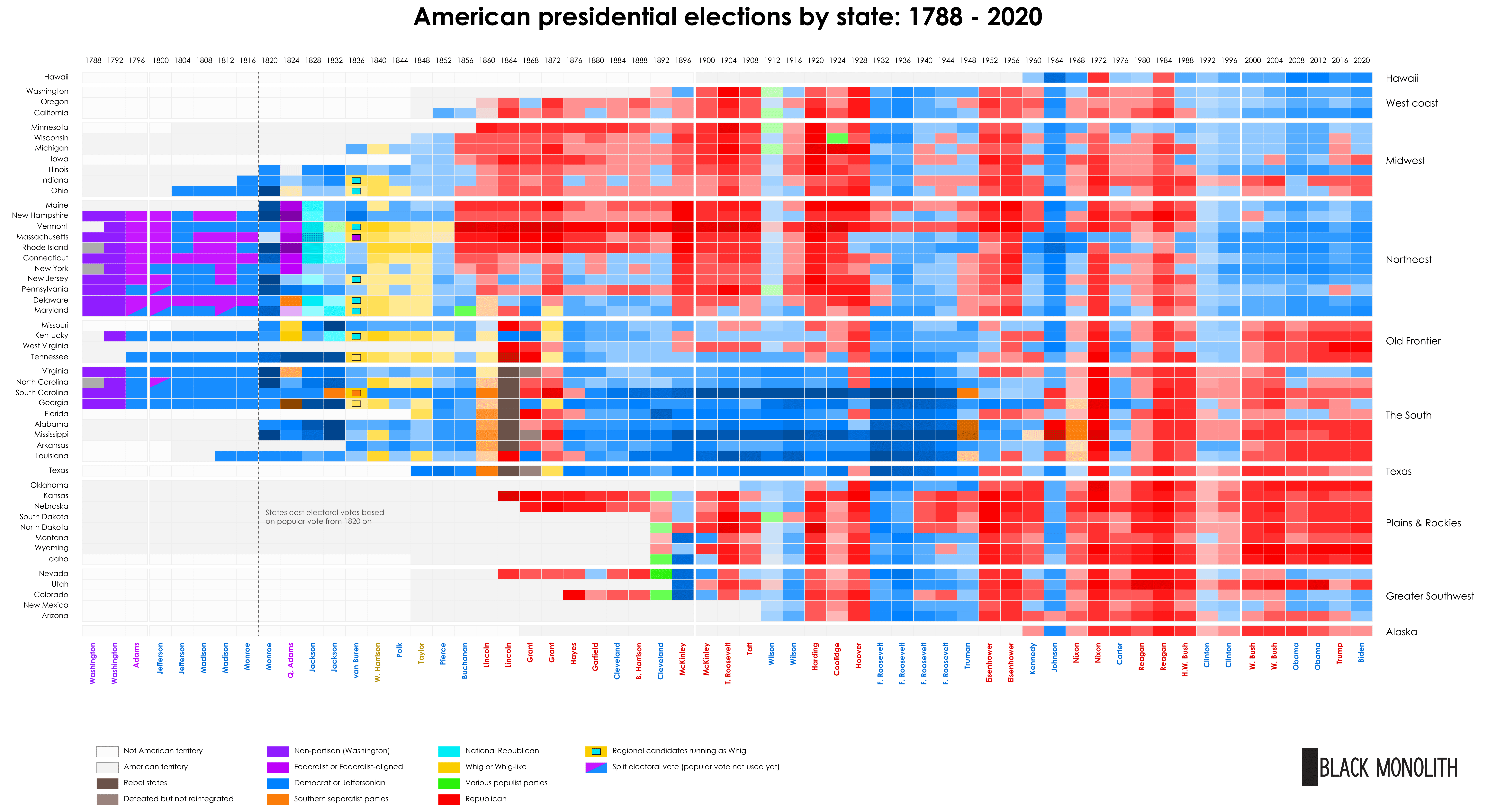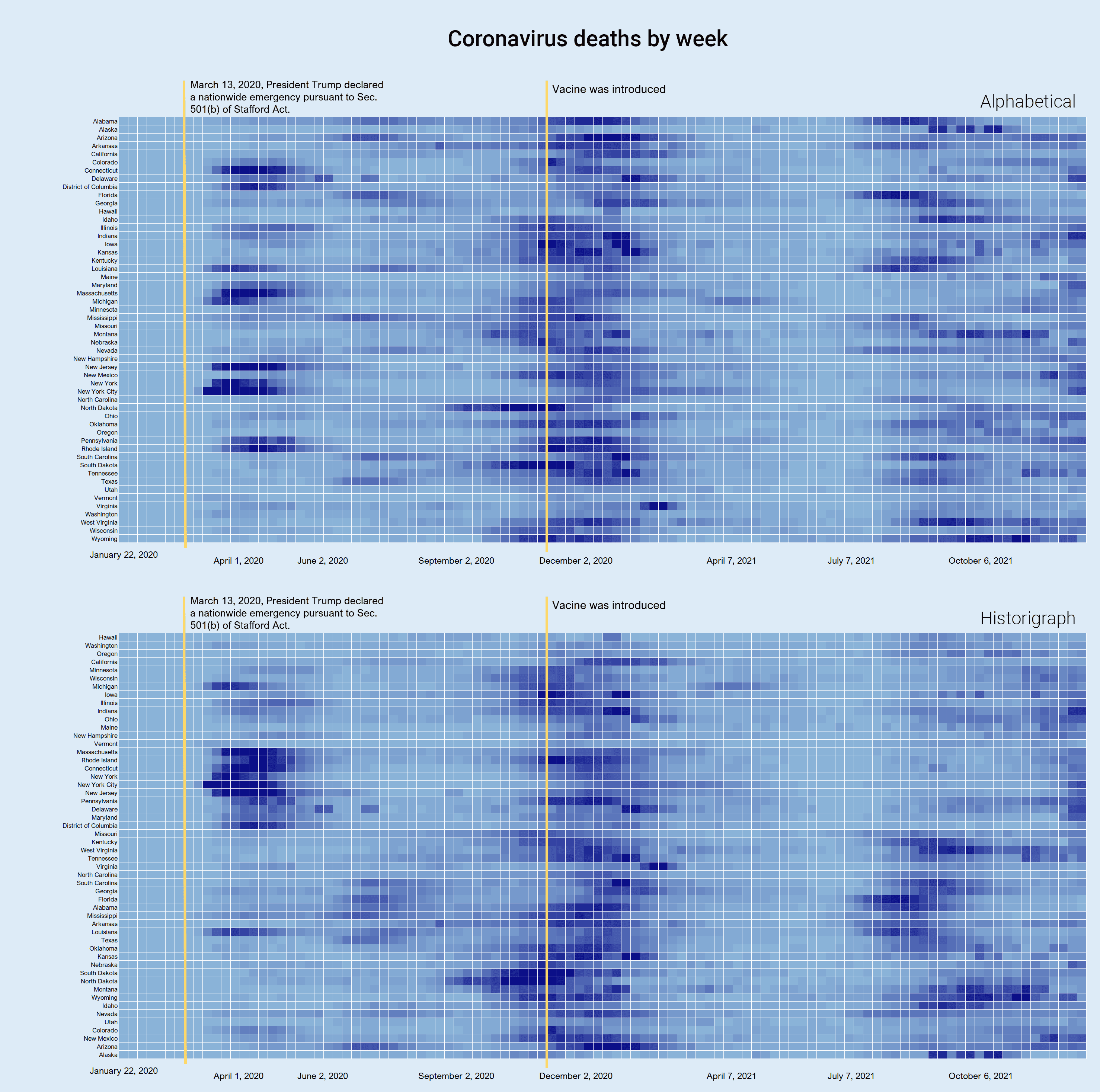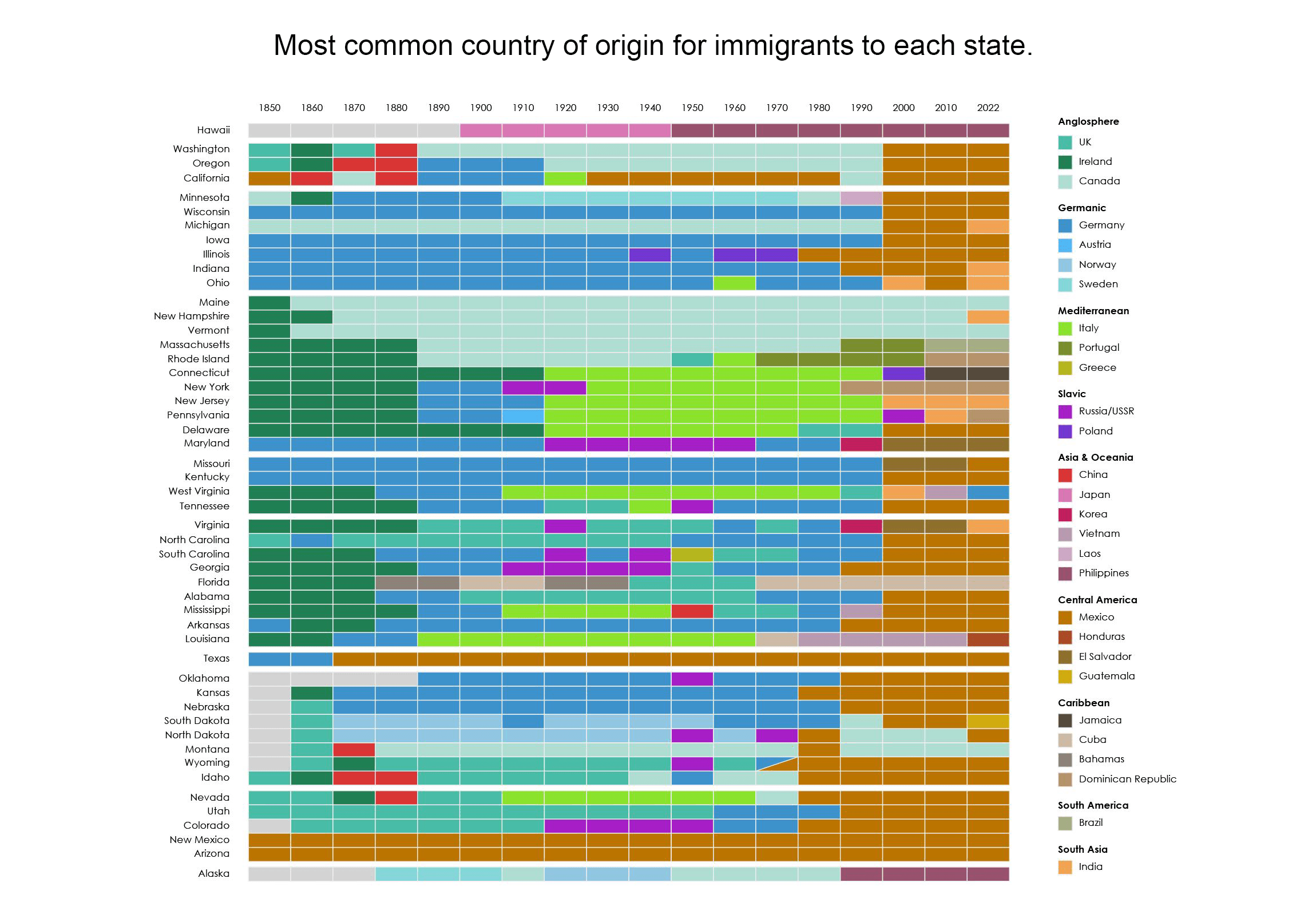American history in a single glance
This visual depicts every presidential election from 1788 to 2020, with the hue representing the winning party and the intensity representing the margin of victory. The distinct eras of American politics (known as the "party systems") are clearly visible. This graphic demonstrates the effectiveness of the historigraph as a means for teaching complex history which would otherwise be overwhelming for learners.
This is what difference spatial formatting makes
The data above is coronavirus deaths from the start of the pandemic to early 2022. When the data is alphabetically sorted, the picture is muddled. General waves are discernible, but the spatial nature of the pandemic is completely lost. When it is converted to historigraph format, you can clearly see where outbreaks of COVID start and how they spread.
Even simple data sets can tell a big story
The above graphic shows immigration data for the United States. It demonstrates Edward Tufte's "micro and macro readings" as you can view the immigration pattern for each state, or the predominant trend across the nation, or focus on specific nationalities. Even with the data only available in 10-year intervals, the picture is still clear and compelling.


